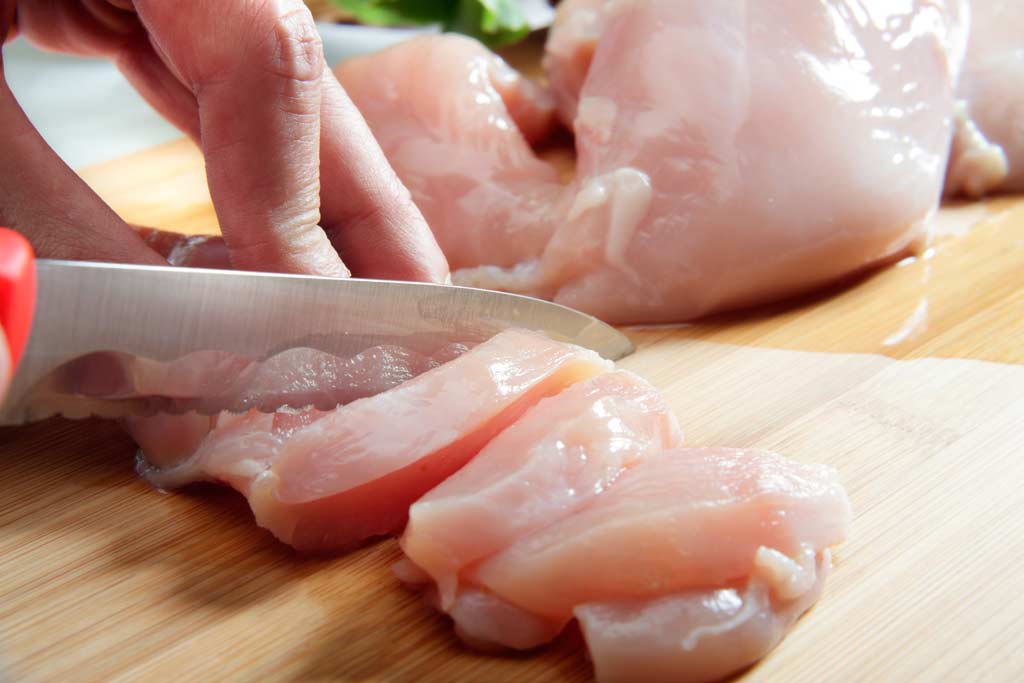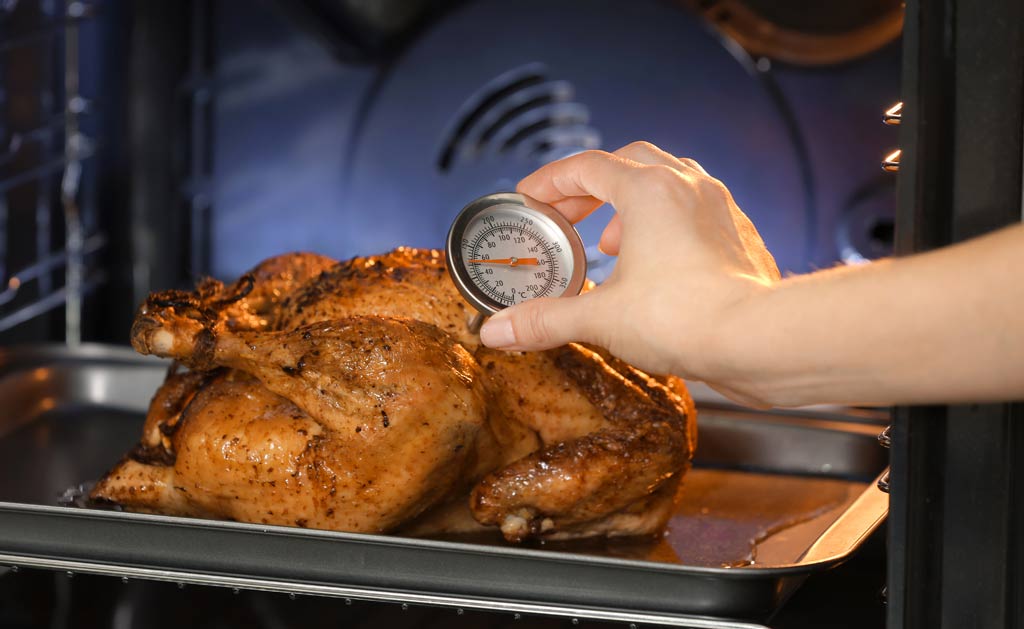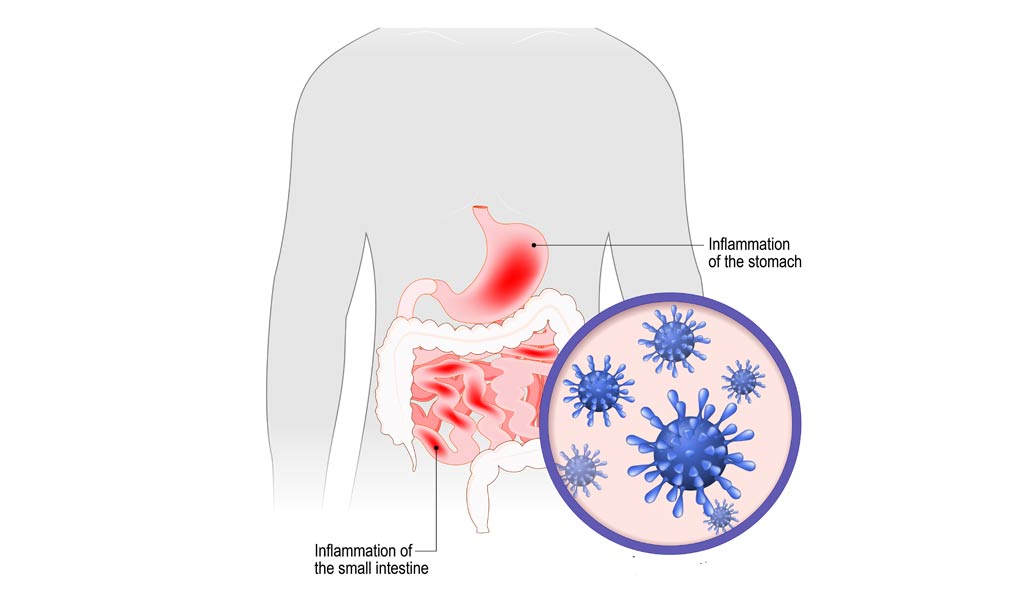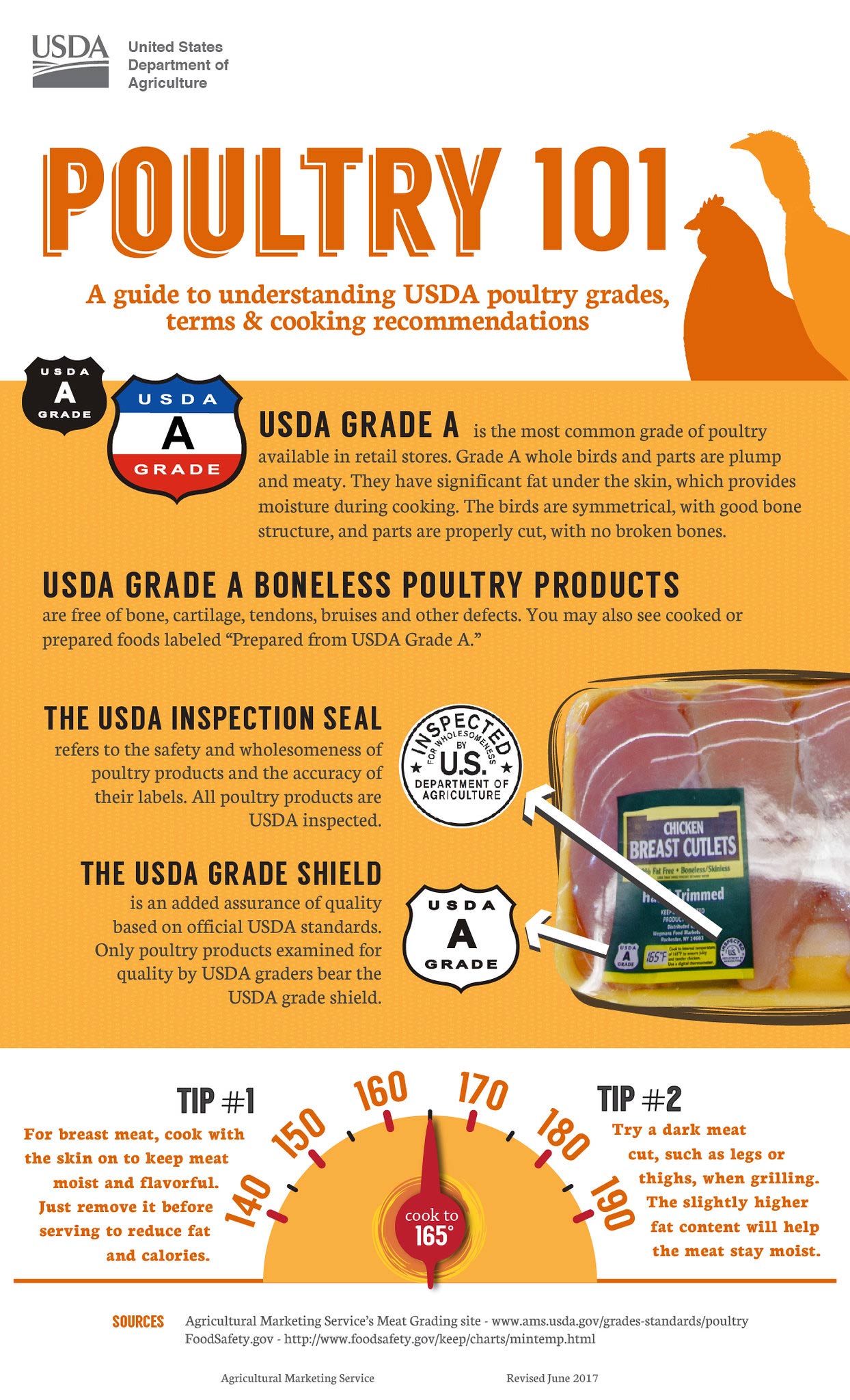Americans buy and consume more chicken than any other food. Chicken consumption per capita has increased nearly every year since the mid 1960’s, while red meat consumption has steadily declined – according to the USDA and the National Chicken Council.
Chicken may be the most consumed protein, but it also causes the most cases of foodborne illnesses, according to the Centers for Disease Control and Prevention (CDC).
Raw chicken and poultry may contain harmful bacteria – such as salmonella, listeria, and campylobacter – and washing it does not remove the bacteria. This bacteria can also be spread to other items and food – if proper procedures are not followed.
The only way to kill bacteria on chicken is by cooking it to a safe internal temperature – as measured by a food thermometer.
Thus, it is very important to follow proper preparation and cooking procedures to ensure food safety when it comes to chicken and poultry.
National Chicken Month
The National Chicken Council (NCC) is the national trade association representing chicken producers and processors, who raise and process 95 percent of the chicken in the United States.
The NCC organized the major chicken producers in the U.S. to establish September as National Chicken Month and promote chicken sales. This typically once slow month for chicken sales, as the summer grilling slowed and kids go back-to-school, has turned into one of the year’s best performing sales periods.
Use the hashtag #NationalChickenMonth – or follow the NCC on Twitter (@chickencouncil) and Facebook (Chicken). Their other website ChickenRoost.com is the place for every recipe imaginable for chicken.



Research: Many Do Not Follow Recommended Food Safety Practices
According to research from the University of California, Davis, many consumers do not follow recommended food safety practices in preparing their own meals at home.
The study analyzed video footage taken of 120 participants preparing a self-selected chicken dish and salad in their home kitchens.
The participants were experienced in chicken preparation, with 85 percent serving chicken dishes in their home weekly, and 84 percent reporting being knowledgeable about food safety; 48 percent indicated they had received formal food safety training. Among the key findings:
Cleanliness and Cross contamination concerns:
- Most participants, 65 percent, did not wash their hands before starting meal preparation and 38 percent did not wash their hands after touching raw chicken.
- Only 10 percent of participants washed their hands for the recommended duration of 20 seconds and about one-third of the washing occasions used water only, without soap.
- Nearly 50 percent of participants were observed washing their chicken in the sink prior to preparation, a practice that is not recommended as it leads to spreading bacteria over multiple surfaces in the kitchen.
Insufficient cooking temperatures concerns:
- 40 percent of participants undercooked their chicken, regardless of preparation method and only 29 percent knew the correct USDA recommended temperature of 165˚F.
- Researchers observed that cooking thermometers were not widely used, with only 48 percent of participants owning one, and 69 percent of those reporting that they seldom use it to check if chicken is completely cooked. Most participants determined “fully cooked” based on appearance, an unreliable method according to the USDA. No participants reported calibrating their thermometers to ensure accuracy.



Washing Chicken Can Spread Harmful Bacteria
According to the USDA, washing poultry or chicken before cooking is not recommended. When you wash uncooked chicken, you can easily spread salmonella or other bacteria from poultry juices can be spread to other foods, utensils, and surfaces.
- Learn about proper hygiene, cross contamination, cold and hot food safety, foodborne pathogens, and best practices to prevent foodborne illness.
- Food Manager Training & ANSI Certification - $99.00
- Food Handler Training - only $7.00!
- HACCP Training: 16hr/4hr/1hr
- Food Allergy Training - $15.00
- Enter Promo "train10off" at Checkout
This is called cross-contamination. It also makes it more likely someone in your family will touch the contaminated items or surfaces and get sick.
Washing Chicken Spreads Germs
Credit: Centers for Disease Control and Prevention
To prevent cross-contamination, build habits such as frequently washing hands, utensils, cutting boards, and work surfaces. For instance, if you prep a raw chicken on a cutting board, don’t use the same cutting board later to slice tomatoes for the salad. At least not without washing it first. And the same goes for your knife.


Cooking Chicken to the Proper Temperature
Raw chicken is not safe to eat and will lead to food illness or poisoning. The best way to make sure that your chicken does not contain harmful bacteria is to cook it properly.
According to the USDA, all poultry (breasts, whole bird, legs, thighs, and wings, ground poultry, and stuffing) should always be cooked thoroughly to 165˚F.


Use a food thermometer to make sure chicken is cooked to a safe internal temperature of 165°F. Also, cut into the thickest part of the meat and ensure that it is steaming hot with no pink meat and that the juices run clear.


Food Illness Symptoms
The symptoms of salmonella food poisoning often come on quickly, usually within 8 to 72 hours after consuming contaminated chicken or poultry.


Symptoms may be aggressive and can last for up to 48 hours. Typical symptoms during this acute stage include:
- abdominal pain, cramping, or tenderness
- chills
- diarrhea
- fever
- muscle pain
- nausea
- vomiting
- signs of dehydration (such as decreased or dark-colored urine, dry mouth, and low energy)
- bloody stool
In some cases, foodborne illness can lead to serious conditions. Call or see the doctor if you or someone in your care has the following signs of food poisoning:
- High fever (temperature more than 101.5°F)
- Diarrhea for more than 3 days that is not improving
- Bloody stools
- Prolonged vomiting that prevents you from keeping liquids down
- Signs of dehydration, such as:
- Making very little urine
- Dry mouth and throat
- Dizziness when standing up
Summary
Raw chicken and poultry may contain harmful bacteria and washing it does not remove the bacteria. This bacteria can also be spread to other items and food – if proper procedures are not followed. The only way to kill bacteria on chicken is by cooking it to a safe internal temperature – as measured by a food thermometer.


Infographic: USDA – Poultry 101


References and Resources
- UC Davis – College of Agriculture and Environmental Sciences: Risky food safety practices in home kitchens
https://caes.ucdavis.edu/news/articles/2014/06/uc-davis-study-identifies-risky-food-safety-practices-in-home-kitchens - National Chicken Council
https://www.nationalchickencouncil.org/ - U.S. Poultry & Egg Association
http://www.uspoultry.org/ - PoultryHub
http://www.poultryhub.org/ - USDA Poultry Factsheets
https://www.fsis.usda.gov/wps/portal/fsis/topics/food-safety-education/get-answers/food-safety-fact-sheets/poultry-preparation/poultry-preparation
- U.S. Grade Standards for Poultry (pdf)
- Poultry Grading Manual
- Regulations Governing the Voluntary Grading of Poultry Products and Rabbit Products
- Chicken Trade Descriptions (pdf)
- Turkey Trade Descriptions (pdf)
- Spanish Chicken Trade Descriptions (pdf)
- Spanish Turkey Trade Descriptions (pdf)







